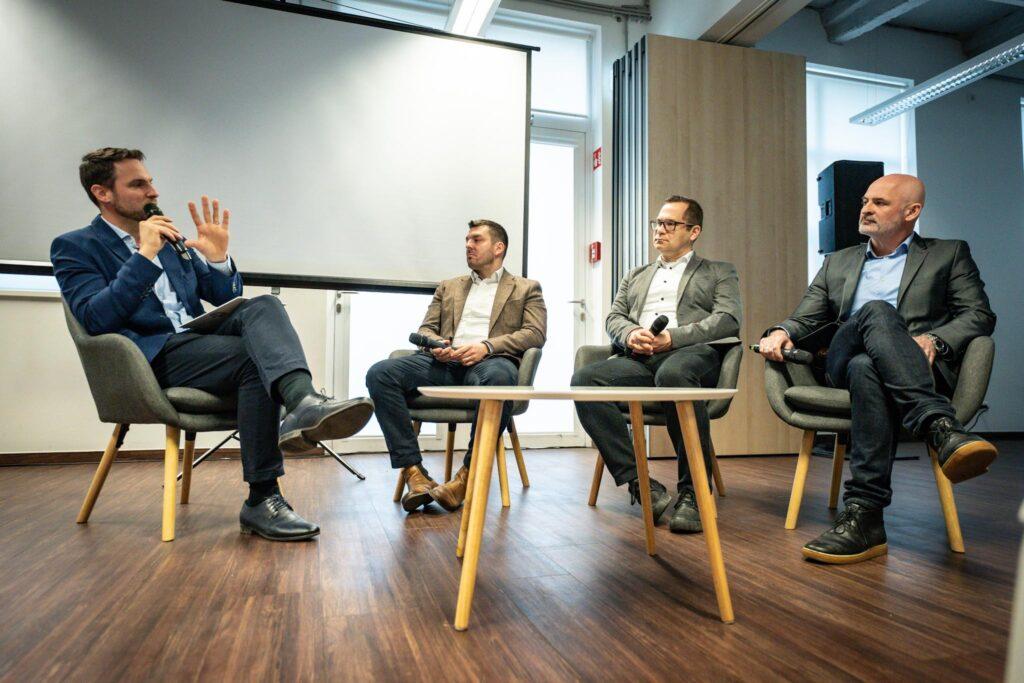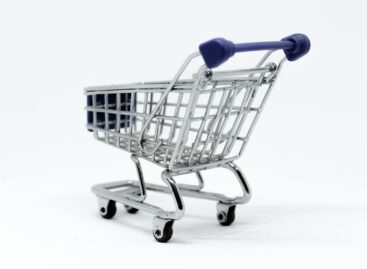Industrial condominium as an investment – is the sector on the verge of new momentum?
Hungary’s industrial real estate leaders gathered for the first time at the HAD Real Estate Business Brunch, organized by the HAD Group, to discuss the future of the sector, the needs of SMEs, and emerging investment opportunities. Top industry experts analyzed trends and challenges, while participants explored whether industrial halls could be a better investment than residential properties in 2025.

Experts outlined the outlook for the industrial real estate market over brunch
Trends, cycles, and disruptions
In recent years, the market has been driven by major investments (e.g. the BMW plant), a post-COVID demand surge, and geopolitical uncertainties. According to Gábor Halász-Csatári of Cushman & Wakefield, 2022 marked the peak, with demand cooling since—but positive signs are emerging. The segment of smaller halls proves particularly sensitive to economic cycles.
RaktárAD: steady growth with the industrial condo model
Since 2016, RaktárAD—part of the HAD Group—has sold 65,000 m² of industrial space, typically between 5,000 and 10,000 m² annually. Its most successful year was 2019, with 11,000 m² sold. The company offers solutions tailored to SMEs, positioning ownership as a viable alternative to leasing.
Market duality and rational decision-making
Experts describe a split market: large-scale developments often power through economic turbulence, while smaller projects tend to stall. Currently, demand for small units is seeing mild recovery, while large-scale transactions remain rare.
Decisions are primarily driven by location, value-for-money, and energy efficiency. László Balogh, lead economist at ingatlan.com, notes that approximately 350,000–360,000 m² of vacant industrial space is currently available—mostly of similar quality. As a result, pricing and value-added services are key differentiators.
Attractive yields, but expertise required
Current yields in the industrial segment are more favorable than in residential real estate, as returns stem from business use rather than appreciation. However, entering this market requires solid expertise, local knowledge, and business experience—highlighted by Gábor Prohászka, Sales Director of Ingatlanpaletta.
Rural potential and regional opportunities
The rural industrial market holds untapped potential, especially for SMEs seeking 300–1,000 m² units. Locations like Kecskemét, Debrecen, Győr, Székesfehérvár, Tatabánya, and Miskolc are considered strategic development areas—according to MIOSZ President Gergely Osadcow. While most developers still rely on the BTS (Build-to-Suit) model, speculative projects are gaining ground in more developed regions.
RaktárAD’s next project to rise in Alsónémedi
The HAD Group and its Belgian partner, Weerts Logistics Park, are building their next industrial complex in Alsónémedi. The site will include 7 storage units across 4,406 m². With excellent access (M0, M5, Liszt Ferenc Airport), the project aims to serve SME needs. Surrounded by greenery, the buildings offer a competitive long-term alternative to leasing.
Related news
Billions could reach Hungarian businesses thanks to a Hungarian tender platform
🎧 Hallgasd a cikket: Lejátszás Szünet Folytatás Leállítás Nyelv: Auto…
Read more >Hungarian exports are gaining new momentum: medium-sized companies are increasingly managing exchange rate risk and opening up to new markets
🎧 Hallgasd a cikket: Lejátszás Szünet Folytatás Leállítás Nyelv: Auto…
Read more >The Chamber, which was renewed a year ago, is providing more and more help to businesses
🎧 Hallgasd a cikket: Lejátszás Szünet Folytatás Leállítás Nyelv: Auto…
Read more >Related news
The Hungarian Confederation of Economic Workers also spoke out regarding the inflation data
🎧 Hallgasd a cikket: Lejátszás Szünet Folytatás Leállítás Nyelv: Auto…
Read more >KSH: in November, consumer prices exceeded the values of the same month of the previous year by an average of 3.8 percent
🎧 Hallgasd a cikket: Lejátszás Szünet Folytatás Leállítás Nyelv: Auto…
Read more >In addition to jelly and marzipan Christmas candy, there are more and more specially flavored Christmas desserts on offer
🎧 Hallgasd a cikket: Lejátszás Szünet Folytatás Leállítás Nyelv: Auto…
Read more >






